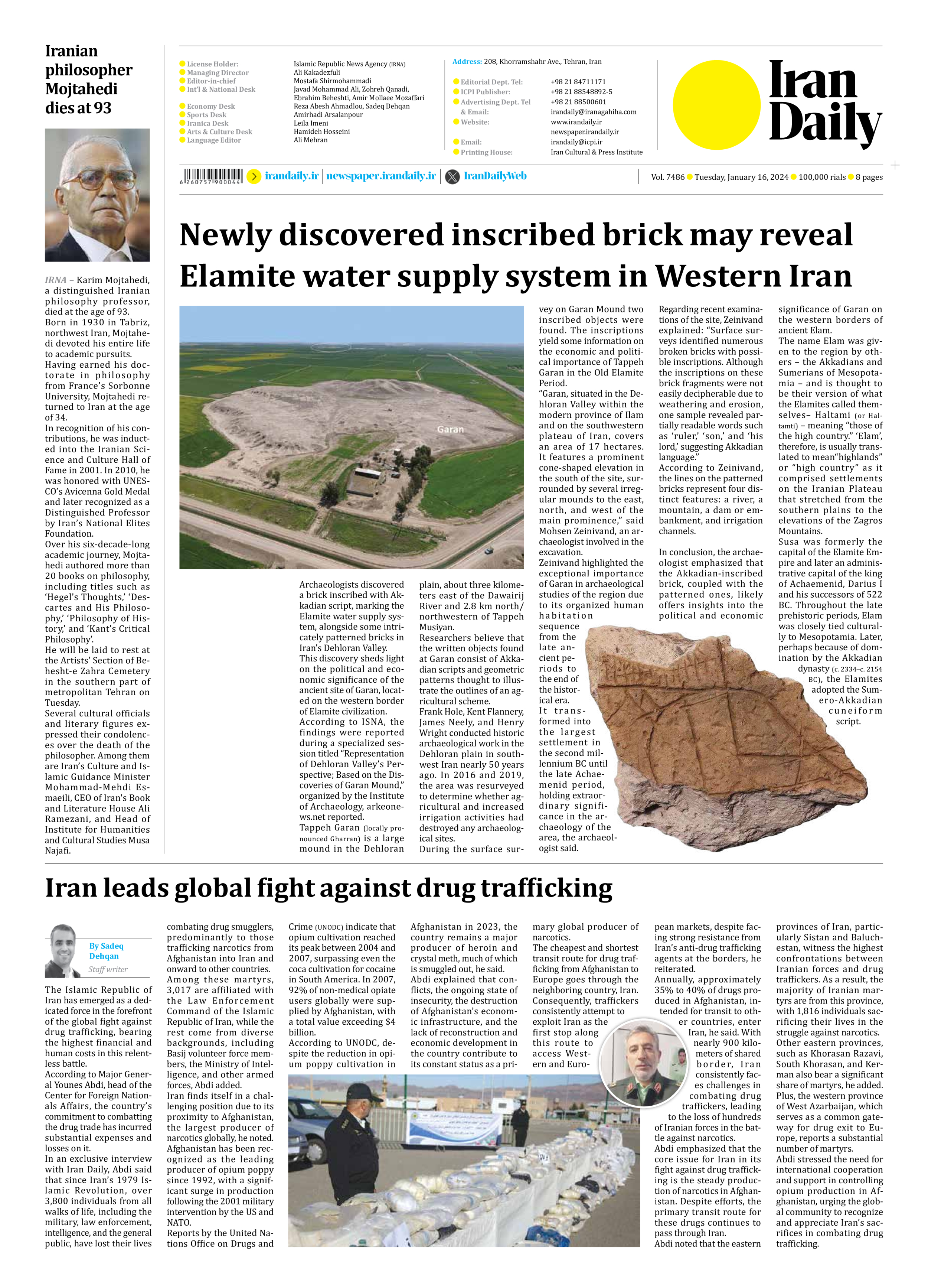
Iran leads global fight against drug trafficking
By Sadeq Dehqan
Staff writer
The Islamic Republic of Iran has emerged as a dedicated force in the forefront of the global fight against drug trafficking, bearing the highest financial and human costs in this relentless battle.
According to Major General Younes Abdi, head of the Center for Foreign Nationals Affairs, the country’s commitment to combatting the drug trade has incurred substantial expenses and losses on it.
In an exclusive interview with Iran Daily, Abdi said that since Iran’s 1979 Islamic Revolution, over 3,800 individuals from all walks of life, including the military, law enforcement, intelligence, and the general public, have lost their lives combating drug smugglers, predominantly to those trafficking narcotics from Afghanistan into Iran and onward to other countries.
Among these martyrs, 3,017 are affiliated with the Law Enforcement Command of the Islamic Republic of Iran, while the rest come from diverse backgrounds, including Basij volunteer force members, the Ministry of Intelligence, and other armed forces, Abdi added.
Iran finds itself in a challenging position due to its proximity to Afghanistan, the largest producer of narcotics globally, he noted.
Afghanistan has been recognized as the leading producer of opium poppy since 1992, with a significant surge in production following the 2001 military intervention by the US and NATO.
Reports by the United Nations Office on Drugs and Crime (UNODC) indicate that opium cultivation reached its peak between 2004 and 2007, surpassing even the coca cultivation for cocaine in South America. In 2007, 92% of non-medical opiate users globally were supplied by Afghanistan, with a total value exceeding $4 billion.
According to UNODC, despite the reduction in opium poppy cultivation in Afghanistan in 2023, the country remains a major producer of heroin and crystal meth, much of which is smuggled out, he said.
Abdi explained that conflicts, the ongoing state of insecurity, the destruction of Afghanistan’s economic infrastructure, and the lack of reconstruction and economic development in the country contribute to its constant status as a primary global producer of narcotics.
The cheapest and shortest transit route for drug trafficking from Afghanistan to Europe goes through the neighboring country, Iran. Consequently, traffickers consistently attempt to exploit Iran as the first stop along this route to access Western and European markets, despite facing strong resistance from Iran’s anti-drug trafficking agents at the borders, he reiterated.
Annually, approximately 35% to 40% of drugs produced in Afghanistan, intended for transit to other countries, enter Iran, he said. With nearly 900 kilometers of shared border, Iran consistently faces challenges in combating drug traffickers, leading to the loss of hundreds of Iranian forces in the battle against narcotics.
Abdi emphasized that the core issue for Iran in its fight against drug trafficking is the steady production of narcotics in Afghanistan. Despite efforts, the primary transit route for these drugs continues to pass through Iran.
Abdi noted that the eastern provinces of Iran, particularly Sistan and Baluchestan, witness the highest confrontations between Iranian forces and drug traffickers. As a result, the majority of Iranian martyrs are from this province, with 1,816 individuals sacrificing their lives in the struggle against narcotics.
Other eastern provinces, such as Khorasan Razavi, South Khorasan, and Kerman also bear a significant share of martyrs, he added. Plus, the western province of West Azarbaijan, which serves as a common gateway for drug exit to Europe, reports a substantial number of martyrs.
Abdi stressed the need for international cooperation and support in controlling opium production in Afghanistan, urging the global community to recognize and appreciate Iran’s sacrifices in combating drug trafficking.







